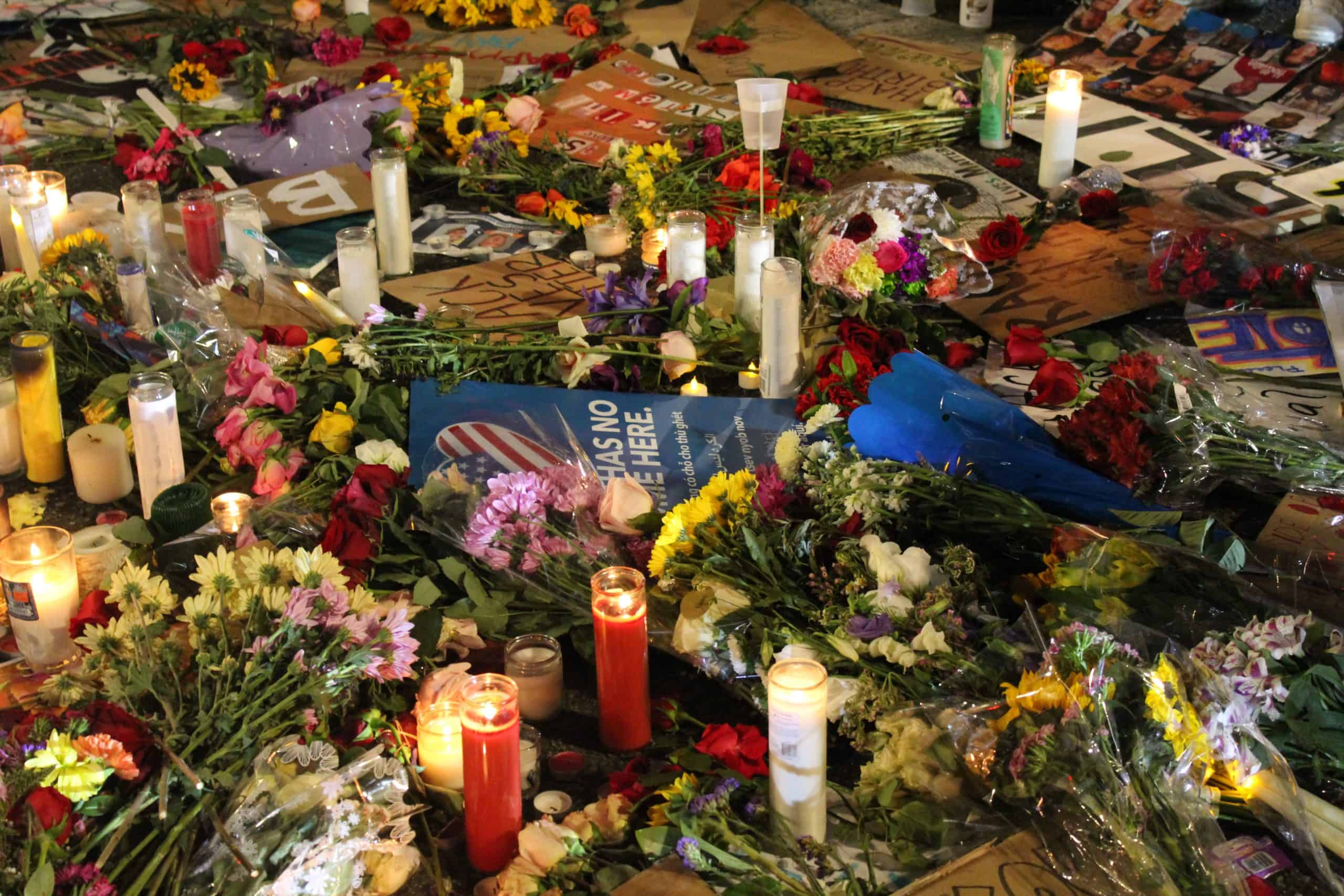I hadn’t planned on being part of a protest, but there I was—standing 200 yards from the border, holding a cross in my hand, wondering if anyone was looking at me. As they often do, a group of religious leaders, migrants, allies, and students had gathered in Douglas, Arizona to grieve the dead, and this time, I was with them. The deacon leading the event had brought a few dozen white crosses, each one inscribed with the name of a migrant who had died recently in the Sonoran Desert. Each of us held a cross, and as cars drove by coming up from the border, the members of the group read out the names. One by one, those gathered called out the dead and placed their crosses by the roadside, erecting our own sort of white picket fence. We might have been north of the Wall, but with every cross, the memory of death extended further into American territory.
Waiting my turn, I felt the cross heavy in my hand. Mine had no name. Instead, I held the cross of a varón inconocido, an unidentified man. The desert is harsh, and bodies frequently go missing. Even when they are found, often by the devoted work of groups like Battalion Search and Rescue, the Samaritans, and the Águilas del Desierto, the desert has eroded any hope of identifying them.
With no name or age, my imagination began to fill in details. What hopes and needs had pushed this man into the desert? Who did he leave behind? A family, his mother, his father, began to take shape in my mind. The reality of his death, his unidentified body in the desert, pulled me in. Did they know? The question seized my stomach into knots. With no message from the US, no call home to say he’d made it, I began to wonder. My imagination pulled me into the room where his mother was sitting, at the moment when someone there said the unsayable. The grief tore into my heart, imagining his mother’s loss and his body in the desert far away. All I could do was weep and pray.
The visceral force of it hit me so hard I couldn’t breathe. I was jerked back to the side of the road just as it was my turn to cry out: “Varón inconocido!” I placed his cross by the side of the road, and took another. Another name, another body, another person had to be grieved.
Contemporary scholars of personhood talk about the “grievability” of an individual as a measure of their worth in the eyes of those around them. This idea suggests that how much we are willing to grieve someone, or rather, what we are willing to do to not grieve them–to make sure they don’t die–tells us about how much we value their life. The ways in which we honor the dead—lying in state, grand funerals, and memorials—attest to the intuitive nature of this concept. Perhaps even more viscerally, so do the brutal ways that groups, both historically and in the present, can treat their enemies–desecrating bodies, prohibiting burials, and the like.
Grieving asserts the value of a person, naming their death as loss. The chance to mourn, to come together as a community and grieve the loss of a loved one is powerful. It serves to name loss as loss, to begin healing, but not erasing, deep wounds, and to assert the humanity of the dead. Grief shows the deceased in their personhood: their relationships to others, their importance, their memory. On the other hand, when broader society says that the dead one is not a person, grief says otherwise. As such, public grief for varones inconocidos, the ungrieved and outcast, can be a political and powerful act. We are used to mourning the famous and the powerful, leaders and celebrities. When we mourn the outcast, our grief can be radical.
From liturgy to scripture, the Church has deep powers to grieve the ungrieved. The Black Church in America has a long history of public funerals and wakes asserting that the life of the dead mattered. From Emmet Till to George Floyd, the public grief of the Black Church has been a powerful way to assert that the killed had lived, that their death was wrong, and that God would raise them up. The broader Christian Church cannot fail to join in mourning. The resources the Church draws on to do this are profound. Our tradition identifies those society deems unpersons, the poor and oppressed, with the most valued person of Christ, asserting their value and scandalizing those who deny it. The tradition of lament from Rachel in the Old Testament to Mary at the foot of the cross, as well as the heritage of the Prophets, equips the Church both to name injustice and to grieve its terrible effects.
From my own experience, I know that these deep traditions work at the level of the heart. To grieve the varón inconocido as part of a church community, linking his death with the cross and asserting his humanity, left a powerful mark on me. He kept showing up in my prayer. As I found myself praying for him and for his family, it became clear to me that my prayer was urging me to action. That memorial was a moment of conversion for me, a white kid who grew up far from the border, insulated from migrant communities. Motivated both by sorrow and by grace, I began a journey towards my present work and studies with and for migrants and refugees. Grieving the dead called me to work for the living.
As the Church celebrates All Souls’ Day, we acknowledge the ways we are linked in holy relationship with the dead. When faithfulness to that relationship demands that we cry out for justice, let me suggest that we, as Church, begin with grief.
Photo by Jenna Ellis on Unsplash


